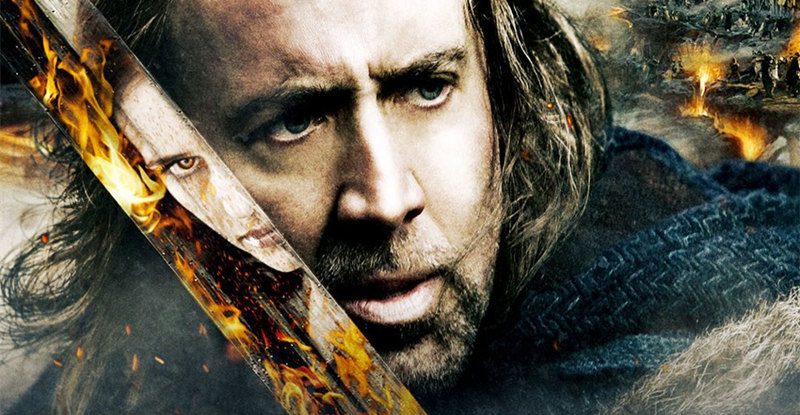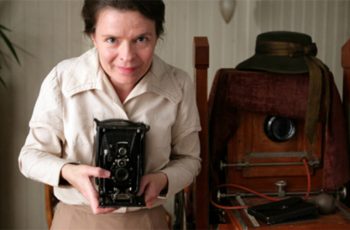“Mirror Mirror” is a strange film, and not in a “Big Fish” way. It’s as if director Tarsem Singh (“Immortals”) couldn’t decide whether to go with indie quirkiness, tongue-in-cheek comedy, revisionist headstanding, dramatic retelling, live-action cartoon, or all-out fantasy. The title invites viewers to complete the famous line from Disney’s “Snow White and the Seven Dwarfs” (Mirror Mirror on the wall, who’s the fairest one of all?), which suggests a traditional or ironic approach. As it turns out, “Mirror Mirror” is neither.
In fact, I’m not sure what it is. Imdb.com describes it as an adventure comedy drama, but as is often the case with such things, the comedy isn’t funny enough and the drama isn’t dramatic enough. There’s adventure, but I’m not even sure it’s adventurous enough.
Five people worked on the screenplay, and not one of them saw anything amiss with a beginning that features the Queen (Julia Roberts, who wasn’t directed to be over-the-top enough, if you ask me) explaining that this is her story. Great, I thought. “Wicked” managed a deviously wicked critique of “The Wizard of Oz” by telling the story from Elphaba’s perspective. Trouble is, “Mirror Mirror” uses multiple points of view, and tonally it favors Snow White. So it’s not the Queen’s story after all, we quickly learn.
Other oddities abound. The prince isn’t charming—though he does look semi-buff without a shirt—and the dwarfs aren’t cute little miners. They’re highwaymen who attack and rob while wearing inflatable/hydraulic/who-knows-what accordion legs and dressing like the Village People—including one who looks like a cowboy, one a conquistador, another like a beret-wearing Frenchman, a little Napoleon, one like an Ewok, and another like a stovepipe hat-wearing Mad Hatter.
Even that would have been fine, if subverting the fairy tale were the goal. But it’s never clear what “Mirror Mirror” is saying about the Snow White legend, or about fairy tales in general. It feels like a narrative without a story. And when the end credits roll and you think about the overall shape of the film, it really didn’t deviate enough from the legend to make it stand out in any significant way. It’s surprisingly pedestrian. I don’t even have to go into a plot summary, it’s that familiar.
Glenn Close went a little too over-the-top in “101 Dalmatians,” but Roberts could have used a little help finding just the right way to play the Queen. Or maybe she played the part as directed. But I didn’t sense much complexity in her character, and there was a curious lack of energy. I mean, think of Disney’s Queen. She’s scary, she’s vain, she’s devious, she’s all sorts of adjectives. The Queen in “Mirror Mirror” is oatmeal without the salt or sugar.
While Snow White isn’t as helpless and virginal as she was in previous incarnations, Lily Collins isn’t able to bring her to life any better—certainly not compared to what Anne Hathaway did with her character in “Ella Enchanted,” or what Amy Adams did in “Enchanted”—or even what Drew Barrymore managed with “Ever After.”
I suspect that the problem lies with the screenplay and direction, because it’s hard to get a handle on a character when the people behind the scenes can’t seem to decide what kind of film or statements they’re making.
“Mirror Mirror” is rated PG, and it’s wholesome enough for families. But it probably stands the greatest chance of appealing to the princess set. They’ll love scenes like the costume ball and the Queen’s live chess match. Adults may feel a bit like pawns.
Video:
“Mirror Mirror” comes to 50GB Blu-ray disc via an AVC/MPEG-4 transfer that looks terrific. Colors are bold and bright, black levels are strong, skin-tones look natural in all ranges, and there’s plenty of detail—ranging from delicate hairs to all sorts of textures. The ball scene is particularly glorious. “Mirror Mirror” is presented in 1.85:1 widescreen.
Audio:
For an adventure, there’s a lot of dialogue and center-speaker action, but the effects speakers come to life when the movie does. Still, the bass doesn’t have much rumble to it. Overall, though, the DTS-HD MA 5.1 audio has a full sound and a nice rich timbre. Sounds move across the field organically as well. Subtitles are in English SDH and Spanish.
Extras:
There aren’t a whole lot of extras, but what’s here reinforces that the filmmakers recognize their main audience may well be youngsters. There’s an interactive “Mirror Mirror Storybook,” a two-minute feature about “Prince and Puppies,” an 11-minute feature on “I Believe I Can Dance,” and a standard making-of feature (“Looking through the Mirror”) that has wider appeal. Roiunding out the bonus features are a number of deleted scenes, the theatrical trailer, bonus trailers, and a DVD and Digital Copy of the film.
Bottom line:
It should come as no surprise that the youngest member of our family—a girl—liked “Mirror Mirror” the most. Visually, the film is slick and fun to look at, with some stellar production design—including one of the most breathtaking CGI castle locations I’ve seen in the movies. Because it’s rated PG and the violence is tepid, my guess is that Singh was making a family movie that everyone could see. The trouble is, only the youngest family members are going to really like “Mirror Mirror.”


